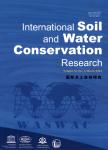Assessment of sediment inflow to a reservoir using the SWAT model under undammed conditions: A case study for the Somerville reservoir, Texas, USA
作者机构:Department of Biological and Agricultural EngineeringTexas A&M UniversityScoates HallCE-TTI Bldg 303H3135 TAMUSpence StreetCollege StationTX 77843USA Texas A&M Transportation Institute-Texas A&M UniversityCE-TTI Bldg 303H3135 TAMUSpence StreetCollege StationTX 77843USA
出 版 物:《International Soil and Water Conservation Research》 (国际水土保持研究(英文))
年 卷 期:2018年第6卷第3期
页 面:222-229页
核心收录:
学科分类:1002[医学-临床医学] 100214[医学-肿瘤学] 10[医学]
主 题:Reservoir watershed Sedimentation Runoff SWAT Soil conservation
摘 要:Worldwide, sedimentation represents a major problem for reservoir and dam management due to the related environmental and economic consequences. However, reservoir sedimentation can be significantly mitigated by controlling the rates of sediment loss across a watershed. This article uses a case study to highlight an assessment technique for sustaining effective soil conservation strategies by providing an insight into the spatial variability of sediment loss rates at the watershed scale. The assessment method employs the Soil and Water Assessment Tool (SWAT) and the Modified Universal Sediment Loss Equation (MUSLE) to quantify sediment losses in a case study for the Somerville reservoir, located in Texas. The SWAT model was employed to simulate upstream inflows in the studied reservoir watershed. The goodness-of-fit analyses suggested a realistic representation of the watershed behavior and satisfactory values of Nash-Sutcliffe Efficiency were obtained during the calibration and validation stages (0.76 ≤ NSE ≤ 0.69). Then the calibrated SWAT was used to generate MUSLE estimates of soil losses under undammed conditions. A weight-average formulation was developed to evaluate the rates of sediment loss at the sub-basin level. Meaningful contrasts were outlined between the sub-basins located at the downstream, the midstream, and the upstream. The study was able to pinpoint sub-basins with critical needs of soil conservation (sediment loss 4 t/ha/year). Overall, the outcomes of the case study demonstrated the value of the methodology and that the outcomes may be used to address the complex problem of sedimentation in watersheds with reservoirs.



